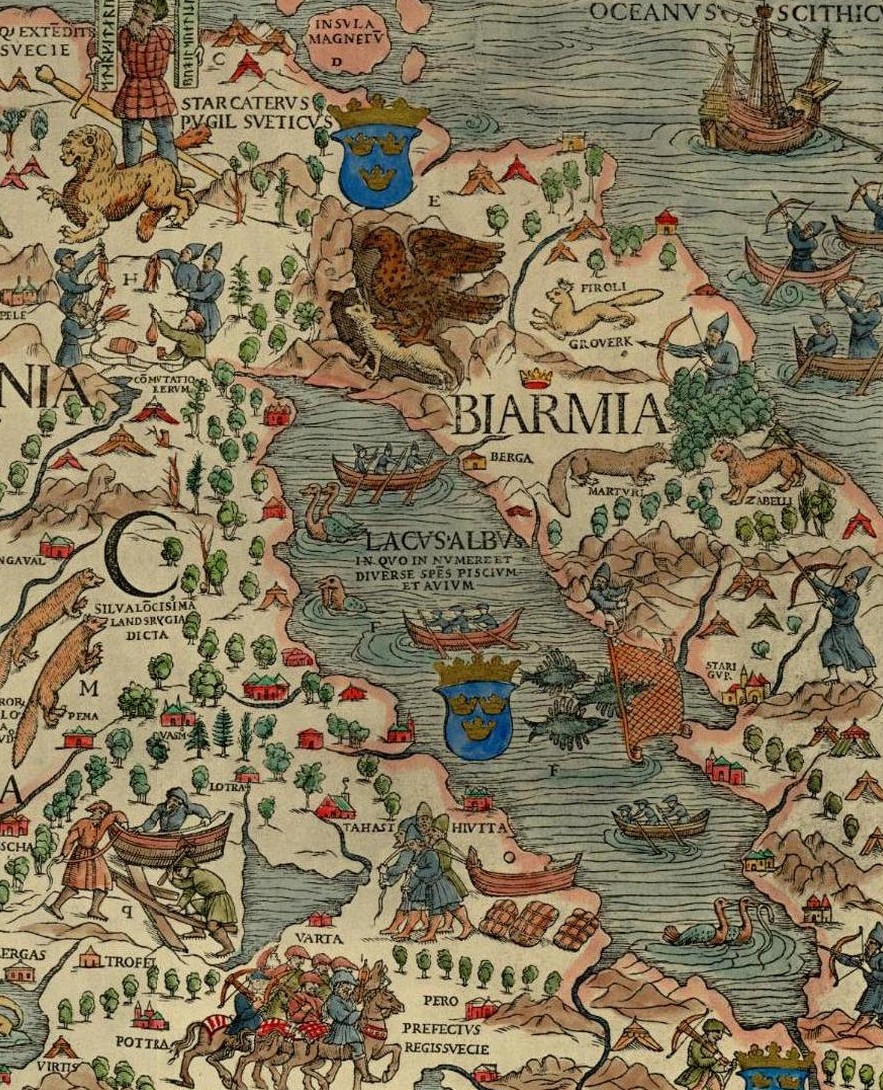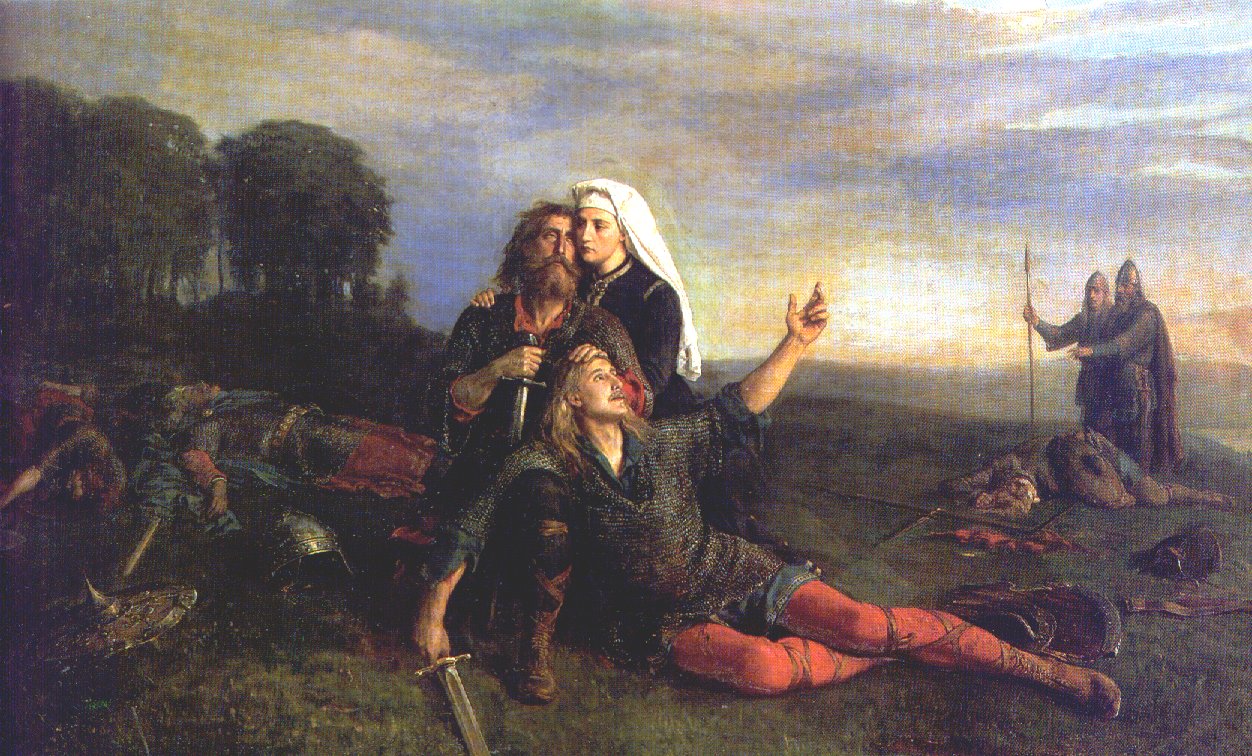|
Húnaland
Hunaland and its people are mentioned several times in the Poetic Edda, and in the Fornaldarsagas. Its origins are partly the old Frankish kingdom (the Franks were once called ''Hugones'', in Latin, and ''Hūgas'' in Old English) and partly in the Huns. The Frankish hero Sigurd is called the ''Hunnish king'' in epic poetry. Also the '' Hervarar saga'' and the '' Vilkina saga'' mention Hunaland, its kings and its hosts. In Old Norse sources, Hunaland often has a mythological character and can shift between different parts of Europe, depending on what kind of skills the hero is to show. It is separated from other countries by the forest Myrkviðr, but one source may locate it up in the north at Bjarmaland, another source says that it borders on Reidgotaland, a third source places it in parts of Germany and other sources place it on either side of the Gulf of Bothnia down to Gästrikland, in Sweden. See also * Norsemen * Frankish Empire Francia, also called the Kingdom of th ... [...More Info...] [...Related Items...] OR: [Wikipedia] [Google] [Baidu] |
Poetic Edda
The ''Poetic Edda'' is the modern name for an untitled collection of Old Norse anonymous narrative poems, which is distinct from the ''Prose Edda'' written by Snorri Sturluson. Several versions exist, all primarily of text from the Icelandic medieval manuscript known as the ''Codex Regius'', which contains 31 poems. The ''Codex Regius'' is arguably the most important extant source on Norse mythology and Germanic heroic legends. Since the early 19th century, it has had a powerful influence on Scandinavian literature, not only through its stories, but also through the visionary force and the dramatic quality of many of the poems. It has also been an inspiration for later innovations in poetic meter, particularly in Nordic languages, with its use of terse, stress-based metrical schemes that lack final rhymes, instead focusing on alliterative devices and strongly concentrated imagery. Poets who have acknowledged their debt to the ''Codex Regius'' include Vilhelm Ekelund, August Stri ... [...More Info...] [...Related Items...] OR: [Wikipedia] [Google] [Baidu] |
Old Norse
Old Norse, Old Nordic, or Old Scandinavian, is a stage of development of North Germanic languages, North Germanic dialects before their final divergence into separate Nordic languages. Old Norse was spoken by inhabitants of Scandinavia and their Viking expansion, overseas settlements and chronologically coincides with the Viking Age, the Christianization of Scandinavia and the consolidation of Scandinavian kingdoms from about the 7th to the 15th centuries. The Proto-Norse language developed into Old Norse by the 8th century, and Old Norse began to develop into the modern North Germanic languages in the mid-to-late 14th century, ending the language phase known as Old Norse. These dates, however, are not absolute, since written Old Norse is found well into the 15th century. Old Norse was divided into three dialects: Old West Norse, ''Old West Norse'' or ''Old West Nordic'' (often referred to as ''Old Norse''), Old East Norse, ''Old East Norse'' or ''Old East Nordic'', and ''Ol ... [...More Info...] [...Related Items...] OR: [Wikipedia] [Google] [Baidu] |
Norsemen
The Norsemen (or Norse people) were a North Germanic ethnolinguistic group of the Early Middle Ages, during which they spoke the Old Norse language. The language belongs to the North Germanic branch of the Indo-European languages and is the predecessor of the modern Germanic languages of Scandinavia. During the late eighth century, Scandinavians embarked on a large-scale expansion in all directions, giving rise to the Viking Age. In English-language scholarship since the 19th century, Norse seafaring traders, settlers and warriors have commonly been referred to as Vikings. Historians of Anglo-Saxon England distinguish between Norse Vikings (Norsemen) from Norway who mainly invaded and occupied the islands north and north-west of Britain, Ireland and western Britain, and Danish Vikings, who principally invaded and occupied eastern Britain. Modern descendants of Norsemen are the Danes, Icelanders, Faroe Islanders, Norwegians, and Swedes, who are now generally referred to as "Sc ... [...More Info...] [...Related Items...] OR: [Wikipedia] [Google] [Baidu] |
Gästrikland
Gästrikland () is a historical province or ''landskap'' on the eastern coast of Sweden. It borders Uppland, Västmanland, Dalarna, Hälsingland and the Gulf of Bothnia. Gästrikland is the southernmost of the Norrland provinces. Other forms of the name used are ''Gestricia'' and ''Gastrikland''. Before 1900, the spelling was officially ''Gestrikland'' in Swedish. Administration The traditional provinces of Sweden serve no administrative or political purposes, but are historical and cultural entities. In the case of Gästrikland the province constitutes the southern part of the administrative county, ''län'', Gävleborg County. Heraldry Arms granted in 1560. As with other provinces the arms is represented with a ducal coronet. Blazon: "Argent Hurty an Elk statant Gules attired and hoofed Or." A coat of arms for Gävleborg County was granted in 1938, combining the arms of Gästrikland and Hälsingland. Geography Gästrikland is often called ''the gate to Norrland'' (th ... [...More Info...] [...Related Items...] OR: [Wikipedia] [Google] [Baidu] |
Gulf Of Bothnia
The Gulf of Bothnia (; fi, Pohjanlahti; sv, Bottniska viken) is divided into the Bothnian Bay and Bothnian Sea, and it is the northernmost arm of the Baltic Sea, between Finland's west coast ( East Bothnia) and the Sweden's east coast (West Bothnia and North Bothnia). In the south of the gulf lies Åland, between the Sea of Åland and the Archipelago Sea. Name Bothnia is a latinization. The Swedish name was originally just , with being Old Norse for "gulf" or "bay", which is also the meaning of the second element . The name was applied to the Gulf of Bothnia as in Old Norse, after , which at the time referred to the coastland west of the gulf. Later, was applied to the regions on the western side and the eastern side ('East Bottom' and 'West Bottom'). The Finnish name of Österbotten, (, meaning 'land'), gives a hint as to the meaning in both languages: the meaning of includes both 'bottom' and 'north'. is the base word for north, , with an adjectival suffix adde ... [...More Info...] [...Related Items...] OR: [Wikipedia] [Google] [Baidu] |
Germany
Germany,, officially the Federal Republic of Germany, is a country in Central Europe. It is the second most populous country in Europe after Russia, and the most populous member state of the European Union. Germany is situated between the Baltic and North seas to the north, and the Alps to the south; it covers an area of , with a population of almost 84 million within its 16 constituent states. Germany borders Denmark to the north, Poland and the Czech Republic to the east, Austria and Switzerland to the south, and France, Luxembourg, Belgium, and the Netherlands to the west. The nation's capital and most populous city is Berlin and its financial centre is Frankfurt; the largest urban area is the Ruhr. Various Germanic tribes have inhabited the northern parts of modern Germany since classical antiquity. A region named Germania was documented before AD 100. In 962, the Kingdom of Germany formed the bulk of the Holy Roman Empire. During the 16th ce ... [...More Info...] [...Related Items...] OR: [Wikipedia] [Google] [Baidu] |
Reidgotaland
Reidgotaland, Reidgothland, Reidgotland, Hreidgotaland or Hreiðgotaland was a land mentioned in Germanic heroic legend (mentioned in the Scandinavian sagas as well as the Anglo-Saxon Widsith) usually interpreted as the land of the Goths. Etymology and Location Oddly, ''hreiðr'' can mean "bird's nest" and perhaps it was a kenning for the Goths tradition of moving and "nesting" in new territories, but ''hreið-'' is also a name-prefix meaning "beautiful", "eager", "great", "famous", "noble". Another possibility is that it was originally ''reið'' "ride, journey" (see Raidô). The use of the prefix is simple as the same tribal name was used for the Gutes of Gotland. The identification of the territory varies between the sources. This is the list of meanings given by Nordisk familjebok: # The Island of Gotland. # Götaland. # The land of the Goths, i.e. Gothiscandza and their later territories. In Hervarar saga, it was the same as Oium and bordered the land of the Huns from wh ... [...More Info...] [...Related Items...] OR: [Wikipedia] [Google] [Baidu] |
Bjarmaland
Bjarmaland (also spelt ''Bjarmland'' and ''Bjarmia''; Latin: ''Biarmia''; Old English: ''Beormaland,'' Komi: Биармия ''Biarmia,'' Old Permic: 𐍑𐍙𐍐𐍒𐍜𐍙𐍐) was a territory mentioned in Norse sagas since the Viking Age and in geographical accounts until the 16th century. The term is usually seen to have referred to the southern shores of the White Sea and the basin of the Northern Dvina River (''Vienanjoki'' in Finnish) as well as, presumably, some of the surrounding areas. Today, those territories comprise a part of the Arkhangelsk Oblast of Russia, as well as the Kola Peninsula. Norse voyagers in Bjarmaland According to the '' Voyage of Ohthere'' (c. 890 CE), the Norwegian merchant Ottar (Ohthere) reported to king Alfred the Great that he had sailed for 15 days along the northern coast and then southwards, finally arriving at a great river, probably the Northern Dvina. At the estuary of the river dwelt the ''Beormas'', who unlike the nom ... [...More Info...] [...Related Items...] OR: [Wikipedia] [Google] [Baidu] |
Myrkviðr
In Germanic mythology, Myrkviðr (Old Norse "dark wood"Simek (2007:224) or "black forest"Gentry (2002:101–102)) is the name of several European forests. The direct derivatives of the name occur as a place name both in Sweden and Norway. Related forms of the name occur elsewhere in Europe, such as in the Black Forest (''Schwarzwald''), and may thus be a general term for dark and dense forests of ancient Europe. The name was anglicised by Sir Walter Scott (in ''Waverley'') and William Morris (in ''The House of the Wolfings'') and later popularized by J. R. R. Tolkien as "Mirkwood". Etymology The word ''myrkviðr'' is a compound of two words. The first element is ''myrkr'' "dark", which is cognate to, among others, the English adjectives ''mirky'' and '' murky''.Bjorvand and Lindeman (2007:770) The second element is ''viðr'' "wood, forest".Cleasby and Vigfusson (1874:703) Attestations The name is attested as a mythical local name of a forest in the ''Poetic Edda'' poem ''Loka ... [...More Info...] [...Related Items...] OR: [Wikipedia] [Google] [Baidu] |
Fornaldarsaga
A legendary saga or ''fornaldarsaga'' (literally, "story/history of the ancient era") is a Norse saga that, unlike the Icelanders' sagas, takes place before the settlement of Iceland.The article ''Fornaldarsagor'' in ''Nationalencyklopedin'' (1991) There are some exceptions, such as '' Yngvars saga víðförla'', which takes place in the 11th century. The sagas were probably all written in Iceland, from about the middle of the 13th century to about 1400, although it is possible that some may be of a later date,Einar Ól. Sveinsson, "Fornaldarsögur", in ''Kulturhistorisk leksikon for nordisk middelalder fra vikingtid til reformasjonstid, bd. 4'' (Copenhagen, 1959) such as ''Hrólfs saga kraka''. Description of the sagas In terms of form, ''fornaldarsögur'' are similar to various other saga-genres, but tend towards fairly linear, episodic narratives. Like sagas in other genres, many quote verse, but in the ''fornaldarsögur'' that verse is almost invariably in the metre of Eddaic ... [...More Info...] [...Related Items...] OR: [Wikipedia] [Google] [Baidu] |




